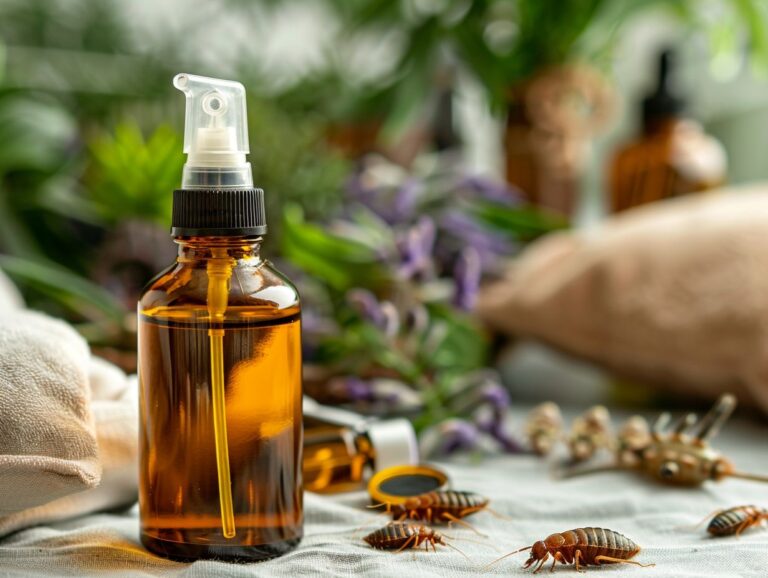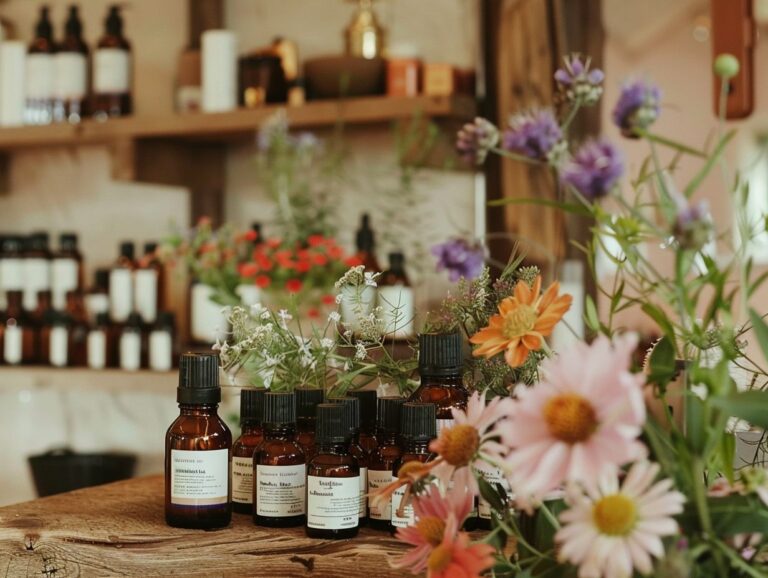Can You Mix Peppermint and Lavender Essential Oils
Are you curious about the benefits of peppermint and lavender essential oils, and whether they can be safely mixed together?
We explore the individual benefits of these popular essential oils, including relieving headaches, promoting relaxation, and reducing pain and inflammation.
Learn how to safely mix peppermint essential oil drink, the potential risks and side effects to be aware of, and different ways to use them effectively.
Discover the power of these aromatic oils!
Key Takeaways:
What Are Essential Oils?
Essential oils are concentrated liquids extracted from plants, such as Lavender and Peppermint, that contain aromatic compounds and natural properties. These oils are renowned for their various health benefits and are commonly used in aromatherapy and natural remedies.
Originating from ancient civilizations, essential oils have been used for centuries for their therapeutic properties. The extraction process involves distillation or cold-pressing to preserve the natural essence of the plants. Each oil carries unique benefits; for example, Lavender is known for its calming effects, while Peppermint can aid digestion and soothe headaches.
- Not only do essential oils smell delightful, but they also offer a holistic approach to health and well-being.
- When inhaled or used in diluted form on the skin, these oils can alleviate stress, enhance mood, and promote relaxation.
What Are Peppermint and Lavender Essential Oils?
Peppermint and Lavender essential oils are highly valued extracts derived from the Mentha piperita and Lavandula angustifolia plants, respectively. These oils offer a wide array of benefits, from promoting relaxation to aiding in pain relief, and are versatile in their uses.
Peppermint oil, known for its invigorating scent and cooling properties, is commonly used to alleviate headaches and nausea. Its refreshing aroma is also popular in aromatherapy for boosting focus and mental clarity.
On the other hand, Lavender oil, with its calming floral fragrance, is revered for its calming effects on the mind and body. It is often used to promote sleep, reduce stress and anxiety, and soothe skin irritations. Both oils can be diffused, topically applied, or added to bathwater for various therapeutic benefits.
What Are the Benefits of Peppermint Essential Oil?
Peppermint essential oil is renowned for its numerous benefits, including relieving headaches and migraines, soothing muscle pain, and improving respiratory functions. Its natural properties make it a popular choice for various health issues.
Regarding headaches, Peppermint oil is known for its cooling sensation that can help alleviate tension and promote relaxation. Its analgesic properties can provide relief from muscle aches and pains when applied topically. The menthol present in Peppermint essential oil can help open up the airways, making it beneficial for respiratory issues like congestion and asthma.
Relieves Headaches and Migraines
Peppermint essential oil is known for its ability to relieve headaches and migraines due to its analgesic and antihistamine properties.
When applied topically, peppermint essential oil can help diminish tension and provide a soothing sensation, easing the discomfort associated with headaches.
Its anti-inflammatory characteristics can reduce the swelling of blood vessels in the brain, a common cause of migraines, offering relief from intense pain.
The refreshing scent of peppermint essential oil can help combat nausea, a frequent symptom experienced during migraines, promoting a sense of well-being.
Soothes Muscle Pain
Peppermint essential oil is effective in soothing muscle pain thanks to its anti-inflammatory properties, providing natural relief for sore muscles and tension.
The cooling sensation of peppermint essential oil can help reduce inflammation in the affected muscles, while its analgesic properties work to alleviate pain. When applied topically, peppermint oil can penetrate deep into the skin, promoting increased blood flow to the area, which aids in reducing muscle stiffness and promoting relaxation.
The refreshing aroma of Peppermint essential oil can help provide an uplifting and invigorating experience during massage therapy, contributing to an overall sense of well-being.
- Plus its muscle-relieving benefits, peppermint essential oil is known for its ability to enhance mental clarity and focus, making it a multi-functional remedy for both physical and mental well-being.
Improves Respiratory Function
Peppermint essential oil can improve respiratory function by clearing congestion and opening up the airways, making it beneficial for sinus issues and overall respiratory health.
When inhaled, Peppermint essential oil acts as a decongestant, helping to alleviate symptoms of colds, flu, and allergies. It possesses antimicrobial properties that can combat bacteria and viruses, further aiding in maintaining a healthy respiratory system. The menthol component in Peppermint oil provides a soothing effect on the nasal passages, promoting easier breathing and relief from congestion.
What Are the Benefits of Lavender Essential Oil?
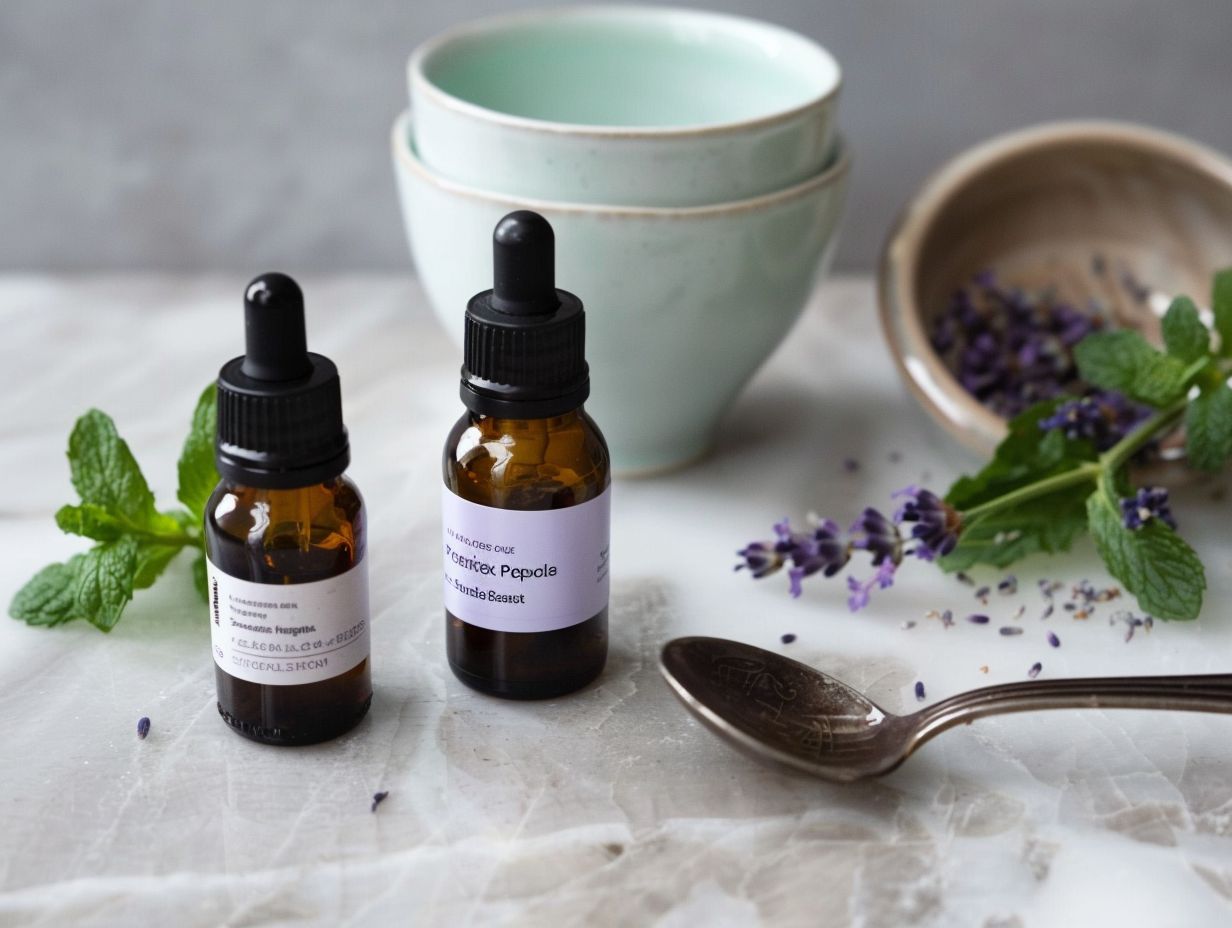
Lavender essential oil is prized for its wide-ranging benefits, from promoting relaxation and improving sleep quality to reducing anxiety and inflammation. Its soothing properties make it a versatile natural remedy.
One of the key benefits of Lavender essential oil is its ability to promote relaxation through its calming aroma, which can help alleviate stress and tension after a long day. In addition, the oil’s anti-anxiety properties can provide relief for those dealing with anxiety disorders or general feelings of unease. Lavender essential oil has been shown to have anti-inflammatory effects, making it an ideal choice for easing muscle soreness and promoting overall well-being.
Promotes Relaxation and Sleep
Lavender essential oil is known for its ability to promote relaxation and enhance sleep quality, making it an ideal choice for achieving a good night’s rest.
Its soothing aroma has been used for centuries to calm the mind and body, helping to reduce anxiety and stress levels. The gentle floral scent of Lavender essential oil can create a peaceful atmosphere conducive to falling asleep faster and experiencing a deeper, more rejuvenating sleep cycle.
Plus its calming effects, Lavender essential oil also has natural properties that can help alleviate insomnia and promote overall sleep wellness. By incorporating it into your bedtime routine, you can create a relaxing ritual that signals to your body and mind that it’s time to unwind and prepare for a restful night’s sleep.
Reduces Anxiety and Stress
Lavender essential oil is effective in reducing anxiety and stress, contributing to improved emotional health and overall well-being.
Research suggests that the scent of Lavender can help lower heart rate and blood pressure, promoting relaxation and calmness. Inhaling the aroma of essential oil triggers the brain to release feel-good neurotransmitters, such as serotonin, which helps in alleviating anxiety and inducing a sense of well-being. Incorporating Lavender into your daily routine through aromatherapy or massage can be a natural and soothing way to combat stress and cultivate a more peaceful state of mind.
Relieves Pain and Inflammation
Lavender essential oil provides natural pain relief and helps reduce inflammation, making it beneficial for conditions like joint pain and muscle inflammation.
When applied topically, lavender essential oil can help soothe sore muscles and ease tension, offering relief from discomfort. Its anti-inflammatory properties can also be particularly effective in reducing swelling and redness associated with joint pain and arthritis. The calming aroma of lavender essential oil can help alleviate stress and promote relaxation, which can further aid in pain management.
Can You Mix Peppermint and Lavender Essential Oils?
Peppermint and Lavender essential oils can be safely mixed to create a synergistic blend that combines the benefits of both oils.
The blend offers a versatile solution for various health and wellness needs. When these two powerful oils are combined, they create a harmonious aroma that is both refreshing and calming, making it ideal for relaxation and stress relief.
The cooling properties of Peppermint oil complement the soothing effects of Lavender, making this blend effective in alleviating headaches, muscle tension, and promoting better sleep.
The antimicrobial properties of Peppermint and the skin-soothing qualities of Lavender make this blend a great choice for supporting healthy skin and promoting overall well-being.
Yes, They Can Be Safely Mixed
Peppermint and Lavender essential oils can indeed be safely mixed to create a harmonious blend that offers comprehensive health support and multiple benefits.
Peppermint, known for its invigorating and refreshing properties, combines with Lavender, renowned for its calming and soothing effects, to create a powerhouse blend that caters to both physical and emotional well-being. This dynamic duo not only promotes respiratory health but also aids in digestion, reduces muscle tension, and supports a healthy immune system.
The antimicrobial properties of Peppermint and Lavender oils make this blend an excellent natural remedy for combating germs and boosting overall wellness. The pleasant aroma of the blend can uplift mood, reduce stress, and promote relaxation, making it a versatile ally in your daily self-care routine.
They Complement Each Other’s Benefits
Peppermint and Lavender essential oils complement each other’s benefits when mixed, creating a synergistic effect that enhances their individual properties and maximizes their combined advantages.
Peppermint essential oil is known for its invigorating and cooling properties, which can help alleviate muscle tension and promote mental clarity. On the other hand, Lavender essential oil is popular for its calming and relaxing effects, aiding in stress relief and enhancing sleep quality. When these two oils are combined, their contrasting yet complementary benefits merge to create a powerful blend that not only relaxes the mind but also revitalizes the body, offering a holistic approach to well-being.
This harmonious combination of Peppermint and Lavender essential oils not only doubles the relaxation and invigoration benefits but also amplifies their healing properties. The minty freshness of Peppermint balances the floral sweetness of Lavender, resulting in a delightful aroma that uplifts the spirit and soothes the senses. Whether used in aromatherapy, massage oils, or diffusers, the synergy between Peppermint and Lavender essential oils offers a versatile solution for enhancing mood, promoting wellness, and fostering a balanced state of mind.
How to Mix Peppermint and Lavender Essential Oils?
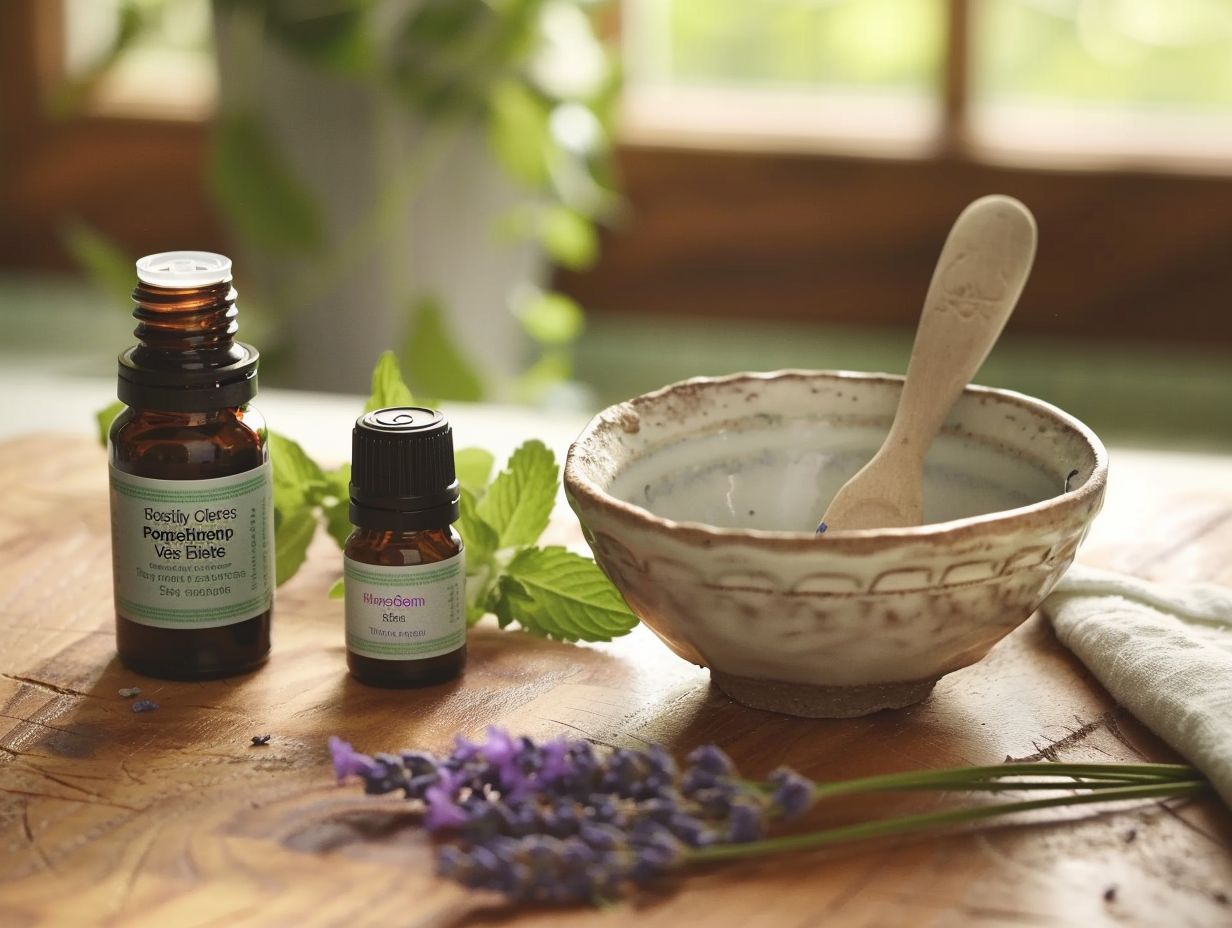
When diluting with a carrier oil, consider using gentle options like sweet almond or jojoba oil. For diffuser usage, add a few drops of each essential oil to water and allow the aroma to fill the room. When creating massage blends, mix a few drops of both oils with a carrier oil and apply to the skin for a soothing experience. In bath blends, dilute a few drops in a tablespoon of a carrier oil before adding to the bathwater for a relaxing soak.
Dilute with a Carrier Oil
To mix Peppermint and Lavender essential oils, dilute them with a carrier oil like jojoba oil or aloe vera gel to ensure safety and optimal absorption when applied topically.
When creating a blend of Peppermint and Lavender essential oils, it is crucial to dilute them properly to prevent skin sensitivities and enhance their efficacy. Carrier oils like jojoba oil or aloe vera gel not only help in reducing the potency of the essential oils but also aid in better penetration into the skin layers, ensuring maximum benefits. Peppermint and Lavender oils are potent on their own, and diluting them makes them safer for direct skin contact.
Use in a Diffuser
Mixing Peppermint and Lavender essential oils in a diffuser allows for effective dispersion of their aromas, providing a soothing and therapeutic environment for aromatherapy benefits.
Once blended, this powerful duo releases a refreshing minty and floral fragrance that can help clear the mind and promote relaxation. Peppermint oil is known for its invigorating properties, promoting focus and energy, while Lavender oil is renowned for its calming and stress-relieving effects. The combination of these two oils in a diffuser creates a harmonious atmosphere, ideal for unwinding after a long day or enhancing meditation and mindfulness practices.
Create a Massage Oil or Bath Blend
Combining Peppermint and Lavender essential oils to create a massage oil or bath blend offers a luxurious way to enjoy their benefits, promoting relaxation, muscle relief, and overall well-being.
These two essential oils, when blended harmoniously, create a dynamic combination known for their soothing and refreshing properties. The cooling essence of Peppermint complements the calming aroma of Lavender, providing a perfect balance for relaxation.
When used in a massage oil, the blend works wonders in easing muscle tension and fatigue, offering a rejuvenating experience. In bath mixes, the aromatic infusion creates a spa-like ambiance, turning a regular bath into a tranquil retreat.
Are There Any Risks or Side Effects to Mixing Peppermint and Lavender Essential Oils?
While mixing Peppermint and Lavender essential oils can offer numerous benefits, there are potential risks such as skin irritation, sensitivity to smell, and interactions with medications that should be considered before use.
For individuals with sensitive skin, the combination of Peppermint and Lavender oils might lead to redness, itching, or a rash upon application. It is advisable to perform a patch test on a small area of skin before using the blend extensively. Skin irritation can vary from person to person, so vigilance is crucial.
In terms of smell sensitivity, some individuals may find the strong aroma of Peppermint and Lavender overwhelming, potentially triggering headaches or allergic reactions. Adjusting the ratio of oils or opting for milder scents might be necessary.
It’s essential to be aware of possible interactions between essential oils and medications. Certain oils, including Peppermint and Lavender, can interfere with medications, affecting their efficacy or causing adverse effects. Consulting with a healthcare professional is advised before incorporating these oils into your routine.
Potential Skin Irritation
One of the risks of mixing Peppermint and Lavender essential oils is potential skin irritation, which can be mitigated by performing a patch test and using proper dilution ratios to avoid adverse reactions.
When using Peppermint and Lavender essential oils, it is essential to remember that these concentrated oils can be potent and may cause skin sensitivity in some individuals. To prevent such reactions, it is advisable to blend them with carrier oils like coconut or almond oil before application.
Another effective precaution is to avoid direct sunlight exposure on the skin after applying these oils, as they can increase the skin’s sensitivity to UV rays. Always ensure that the essential oils are of high quality and purity to reduce the risk of adverse effects. By following these simple steps, you can enjoy the benefits of Peppermint and Lavender oils without worrying about skin irritation.
Sensitivity to Smell
Another consideration when mixing Peppermint and Lavender essential oils is the potential sensitivity to strong smells, which may affect individuals differently based on personal preferences and sensitivities.
While some people find the invigorating scent of Peppermint refreshing and energizing, others might perceive it as overpowering. Similarly, the calming aroma of Lavender may be soothing for many, but there are individuals who could be sensitive to its floral notes.
It is important to remember that everyone’s olfactory senses are unique, and what might be an enjoyable fragrance for one person could be overwhelming for another.
For those with smell sensitivity, it is advisable to use these essential oils in moderation or consider diluting them with a carrier oil to lessen the intensity of the aroma. Testing a small amount on a patch of skin before widespread use can also help identify any adverse reactions.
Potential Interactions with Medications
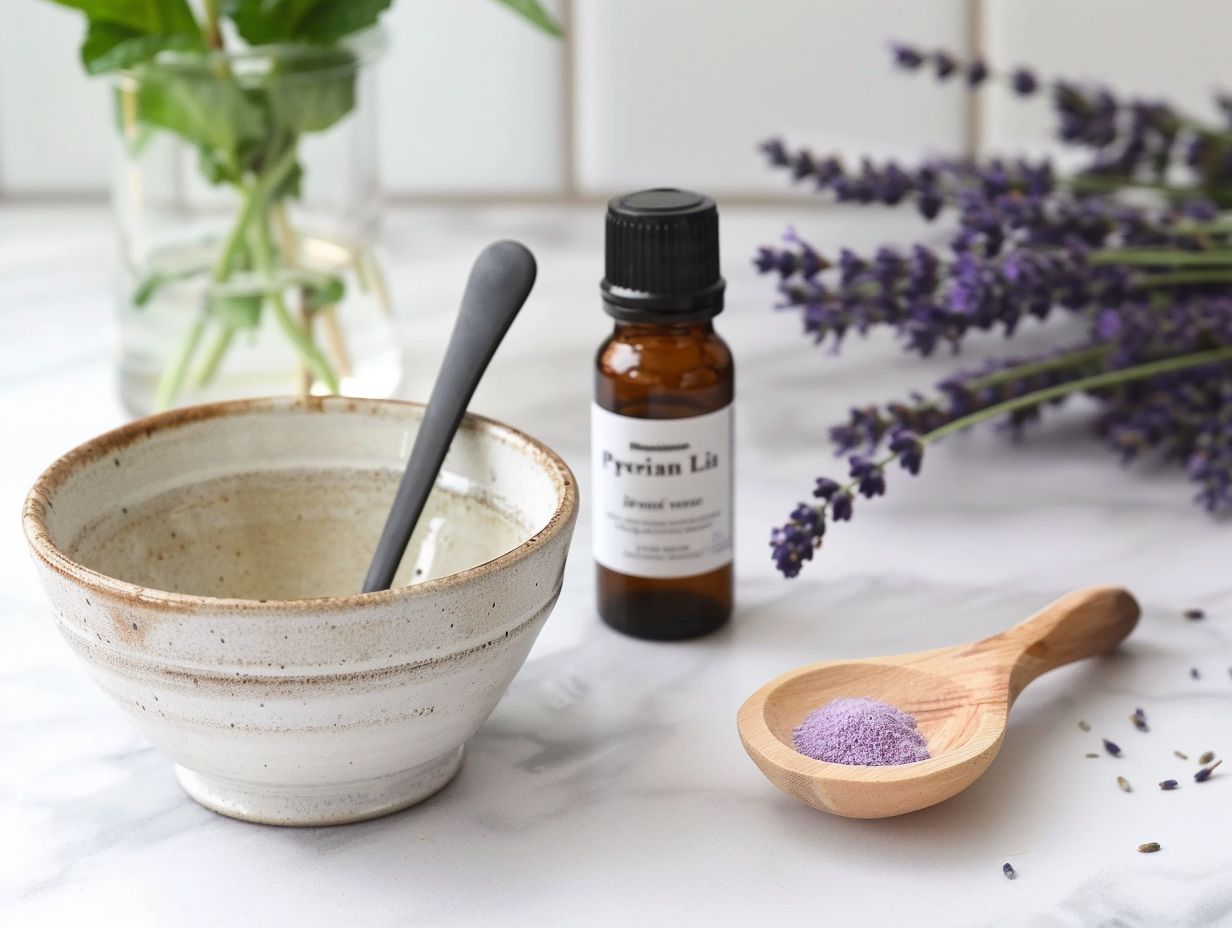
Essential oils like Peppermint and Lavender are widely used for their aromatic and therapeutic properties, but when combined with medications, they can have unintended consequences on your health. For instance, Peppermint oil may interfere with drugs metabolized by the liver enzymes, potentially altering their potency.
On the other hand, Lavender oil could enhance the sedative effects of certain medications, leading to excessive drowsiness or dizziness.
These interactions highlight the importance of seeking professional advice to avoid potential risks and ensure the best health outcomes.
Frequently Asked Questions
Can you mix peppermint and lavender essential oils?
Yes, you can mix peppermint and lavender essential oils. In fact, they are often combined in aromatherapy and skincare products due to their complementary properties.
What are the benefits of mixing peppermint and lavender essential oils?
Combining peppermint and lavender essential oils can provide a variety of benefits, such as calming and soothing effects, improved focus and concentration, relief from headaches and migraines, and improved respiratory health.
How do you mix peppermint and lavender essential oils?
To mix peppermint and lavender essential oils, simply add a few drops of each oil to a diffuser or carrier oil. You can also mix them in a spray bottle with water for a refreshing room spray.
Are there any precautions when mixing peppermint and lavender essential oils?
While peppermint and lavender essential oils are generally safe, it is important to dilute them properly and do a patch test before using them on your skin. As with any essential oils, it is best to consult with a healthcare professional before use, especially if you are pregnant or have any medical conditions.
Can mixing peppermint and lavender essential oils be harmful?
Mixing peppermint and lavender essential oils is generally safe, but using too much of either oil can cause skin irritation or adverse reactions. Always use them in moderation and follow recommended dilution guidelines.
What are some other essential oils that pair well with peppermint and lavender?
Peppermint and lavender essential oils can also be combined with other oils such as lemon, eucalyptus, or rosemary for a more complex and beneficial blend. Experiment and find your favorite combinations!



